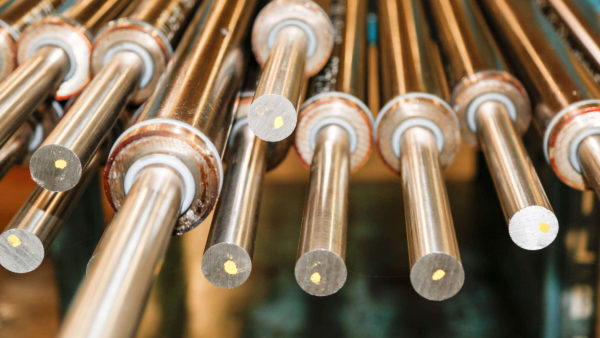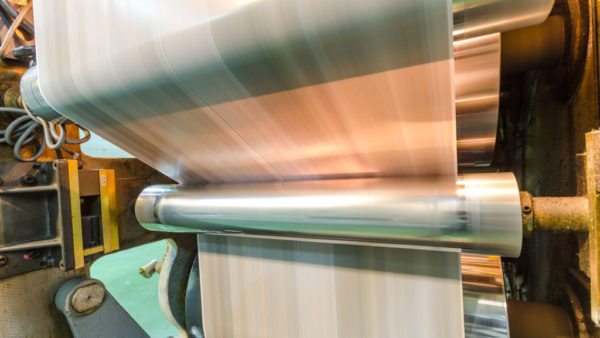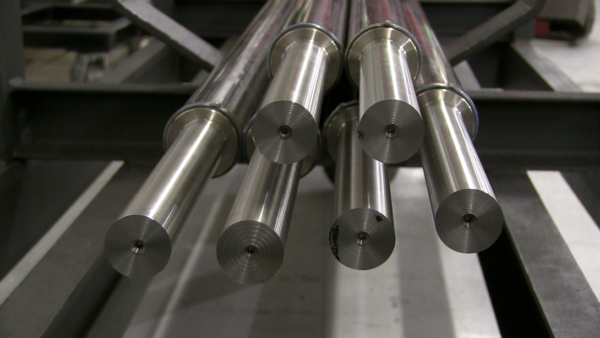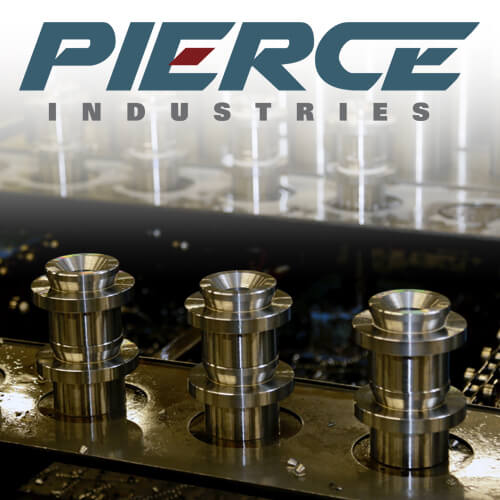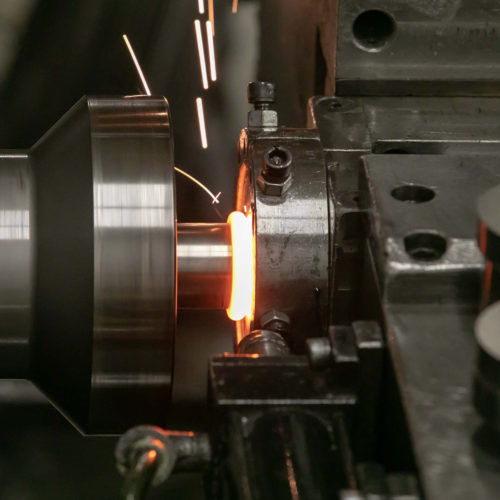Inertia Friction Welding Overview
What is Inertia Friction Welding?
Inertia friction welding is a solid-state welding process that joins materials by using rotation and friction to generate heat, and lateral force to plastically displace material and fuse the workpieces together.
Since its early development, IFW has grown to become a preferred method of welding in a number of industries, ranging from automotive and aerospace to agriculture and drilling, to printing and packaging applications.
As technology and automation has expanded in the last few decades, inertia friction welding continues to be one the most cost-efficient methods of metalworking available.
How Inertia Friction Welding Works
Inertia friction welding is a variation of friction welding that uses kinetic energy with applied lateral force to join parts together. Kinetic energy is achieved using flywheels — a set of heavy wheels that are used to store rotational energy.
The amount of kinetic energy required is determined by two factors: the type of materials being joined together and the geometry of the weld.
Once the material and geometry are known, it is possible to pre-calculate the amount of kinetic energy that will be required for the weld.
Advances in technology and developments in the welding process have made understanding the kinetic energy/rotation ratios easier to discover and replicate, resulting in expedited cycle times and an ease of repeatability not found in traditional welding techniques.
A Step by Step Look at Inertia Friction Welding
1. Preparation
Determine key welding factors – flywheel mass, rotational speed, lateral thrust force. Oftentimes, optimal quality can be achieved on the initial run-through.
2. Pre-Contact Rotation
An inertia friction welding machine looks similar to a conventional shop lathe except on one side, a chuck is attached to a flywheel that has a specially-determined mass.
This chuck holds one component of the weld, while an opposite-facing, non-rotational chuck (which moves axially under hydraulic pressure) holds the other.
The flywheel will begin to rotate rapidly, revving up to a predetermined speed and storing up kinetic energy.
3. Contact and Friction
Once the flywheel attains the required speed and level of kinetic energy, the spindle motor is shut off and disengaged (free wheel state). The non-rotating hydraulic ram will force the static piece into the rotating piece, causing an extreme amount of friction.
This friction heats up both materials, softening the welding surfaces of the parts (not melting) to the point that they are able to bond under a considerable amount of lateral pressure.
4. Deceleration and Bonding
As the pieces are compressed together, the kinetic energy of the flywheel mass continues to spin the component, hot-working the metal interface, removing impurities or voids, and refining the grain surface.
The science behind determining the flywheel mass and rotational speed is critical to creating an extremely strong bond. Run the motor too long, and the components will grow too hot and risk an uneven or ineffective bond (and loss of material); shut the motor off too soon and the pieces will not become hot enough to bond.
5. Completion and Testing
When the flywheel completely stops, the weld is complete and the welding process is complete. Altogether, steps 02-04 takes between 15 and 45 seconds depending on the size and composition of the materials. (For reference, if you’re reading at the average rate of 300 words per minute, a roller could have been manufactured in less time than it took to read steps 02-04.)
Advantages of Inertia Friction Welding
Significantly Reduced Cycle Time
It’s hard to overstate how significantly cycle time is reduced by using a friction welding process.
1. Machine controlled process
The factors that are key in regulating the weld (rotational speed, flywheel mass, and thrust force) are machine controlled, resulting in minimal (if any) variation between each product, unlike MIG or TIG welding processes.
2. Extreme consistency and repeatability
Once these factors are determined (a quick process for experienced welders), a component can be rapidly reproduced with little interruption in the process, creating extreme consistency and repeatability for nearly any project.
3. Minimal preparation of components
A minimally prepared saw-cut surface is suitable for the inertia friction welding process because the displacement of plastic metal eliminates original surface conditions and expels any contaminants from the weld zone.
4. Minimal post-welding machining required
The inertia friction welding technique produces near-net shape components that require minimal post-machining. In some cases, a ring of flash metal at the joint may have to be removed.
5. Overall faster turnaround time
Simply put, the inertia friction welding process just doesn’t take very long compared to traditional welding or machining techniques.
Joining Dissimilar Metals
Normally, the large discrepancy between the melting points of two dissimilar metals (e.g. stainless steel and aluminum; copper and steel) would make them impossible to weld using traditional techniques, and would require some kind of mechanical connection.
The inertia friction welding process does not require the faying surfaces to melt, so when the workpieces become plasticized, pressed together and then cooled (with adjacent non-heated metal acting like a heat sink), the metals form a high-integrity bond with no alloying of the material.
The ability to choose dissimilar metals for a component allows the manufacturer to eliminate the use of expensive metals in parts of the workpiece that do not require such a metal.
Not only does this reduce the material cost of the welding process, it can also help the application run more efficiently since the burden of the heavier material is reduced.
Cost Reductions Compared to Traditional Welding and CNC Machining
Serious savings are achieved through the inertia friction welding process in both labor hours and material costs.
1. Dissimilar metals creates savings
As mentioned, the ability to utilize dissimilar metals can help manufacturers save on material costs by eliminating the need to use expensive metals throughout the entire component.
2. Reduced material costs, reduced machining costs
The process requires less raw materials to achieve the same fatigue and torque thresholds of parts formed with other methods. This means a reduction in both raw materials costs and post-welding machining time to remove extra material.
3. Minimal scrap material
Compared to components manufactured with a CNC lathe, inertia friction welding scraps little-to-no material, allowing the manufacturer to purchase significantly less materials to achieve the same volume of production.
4. Reduced operational expenses
Costs are reduced by eliminating the need for the gases, filler materials, and fluxes that are required in fusion welding methods. Machining costs are also reduced by lowering tools costs and increasing productivity.
High Weld Integrity
Inertia friction welding is a solid-state welding process that allows no possibility for gas porosity or slag inclusions.
Friction welding creates a 100% bond of the contact area, creating joints that are equal in quality to forged bonds. The weld properties are superior to welds created with traditional fusion processes, such as MIG or TIG welding.
The process ultimately creates joint strength that is comparable or even greater to the parent materials.
No Quantity Limitations
Inertia friction welding is a cost-effective solution for producing prototype, small runs or large, repeated runs for ongoing projects.
Safety of Workers
The elimination of hazardous bright light and splattering molten material significantly decreases the risk of injuries on the floor.
How Inertia Friction Welding Is Best Used
While inertia friction welding is an extremely useful, cost-effective method of joining metals and other materials, it is not suitable for all applications and has a short set of limitations:
- Materials must be malleable at high temperatures
- Limitations arise with the presence of a brittle phase in the structure (e.g. in materials such as graphite, manganese sulfide, free lead, or tellurium)
- Cast iron is excluded from the list of weldable materials
- Bronzes and brasses are excluded from the list when they have a high lead content (> 0.3%)
- Angular orientation of welded parts is not feasible at this time
- The basic joint must be a butt weld
- In general, the joint face on at least one of the parts must be essentially round in shape
Applications That Benefit From Inertia Friction Welding
1. Roller Manufacturing
The inertia friction welding process reduces costs and cycle time for manufacturers that rely on industrial rollers.
- Nip rollers: Nip rolls are powered rolls used to press two or more sheets together, forming a laminated product. The pressure created at the nip point brings the sheets into contact, and squeezes out bubbles or blisters.
- Feed rollers: On a sheet-fed printing press, a feed roller is one of a set of rubber wheels that transports a sheet of paper from the pile table to the grippers.
- Heat transfer rollers: Heat transfer rollers provide temperature control by circulating heated or cooled fluid through coils under the outer shell of the roll. The fluid cools or heats the roll surface to the desired temperature for the application.
- Conveyor rollers
- Fuser/Pressure rollers
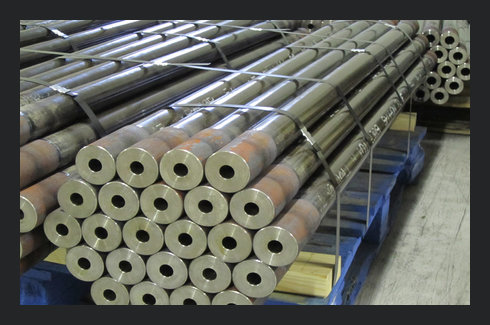
2. Drilling and mining
Read a case study on using Inertia Friction Welding to create drilling rods for a company in the natural gas mining industry
- Oil drilling
- Natural gas drilling
- Water well drilling
3. Aerospace components that require high-strength metals
4. Pneumatic pressure assemblies
Welding Equipment and Size Capabilities at Pierce Industries

Create Efficiencies for Your Operation
Get started with a 1-on-1 conversation with an engineer at Pierce Industries. Ask questions, get answers, and start saving money for your organization
Related Posts
There are many types of friction welding methods that can optimize your manufacturing process. In this article, we will review several different types. Understanding these different types will help you decide which can increase precision and reduce total cost and…
Manufacturing problems can hinder profitability for industrial printer and material handling OEMs. It is critical to be aware of these problems in your own manufacturing operations before they cost you your business. So what are the top manufacturing issues and…
Do you feel like your time, money, and management attention are tied up worrying about quality? One way to avoid buying low quality industrial rollers for your printing and material handling machines is to address friction welding quality control. Start…

